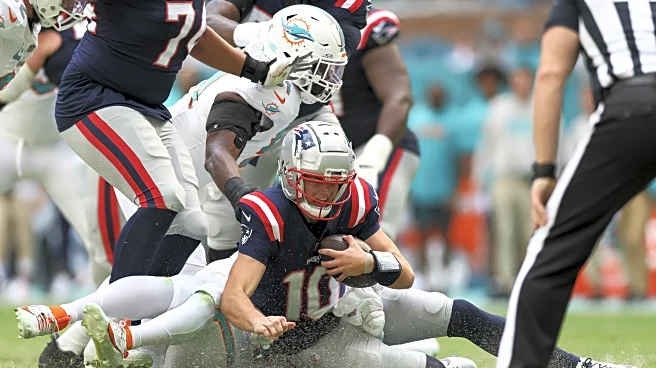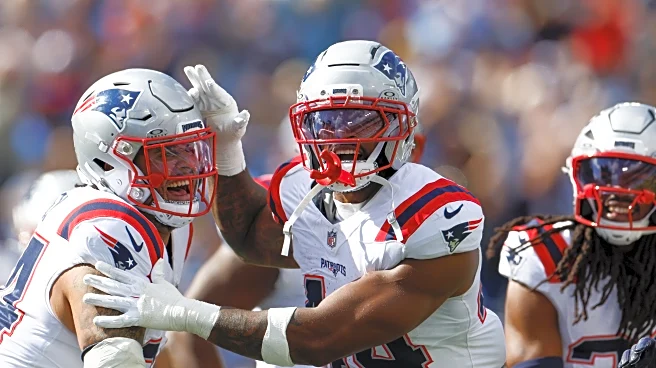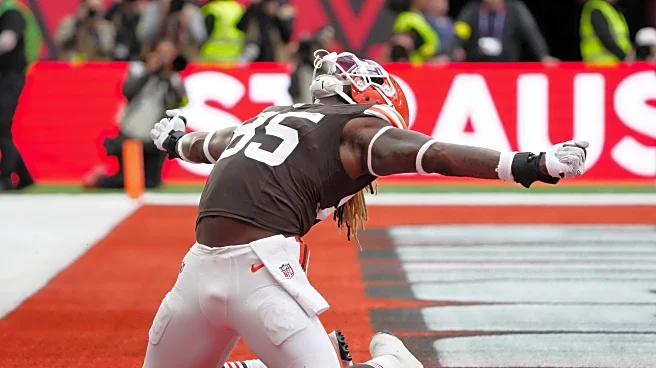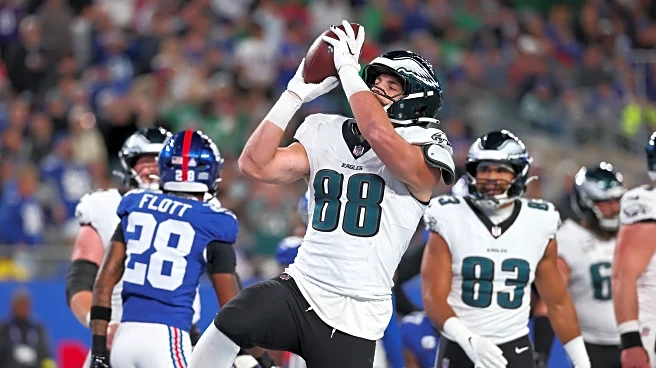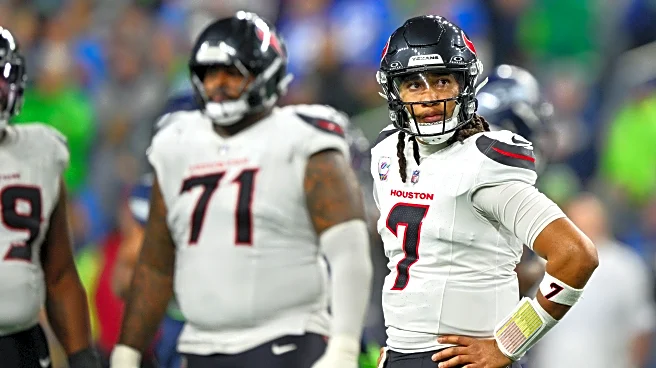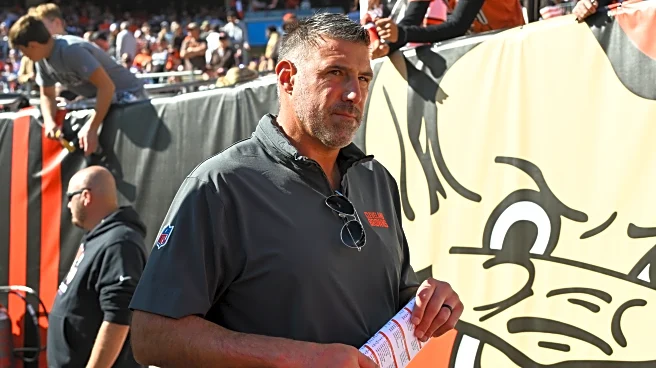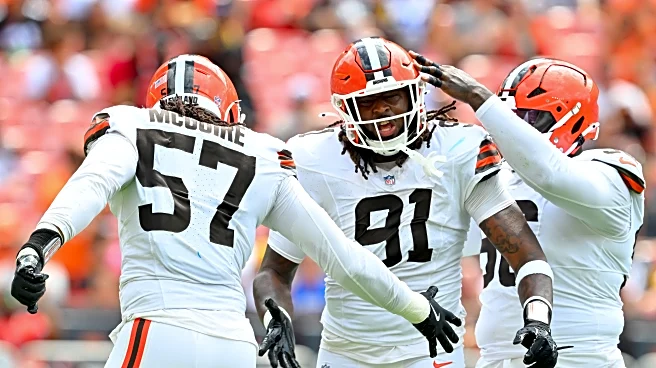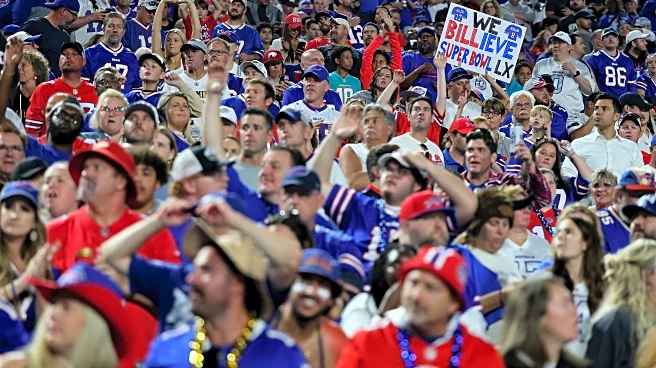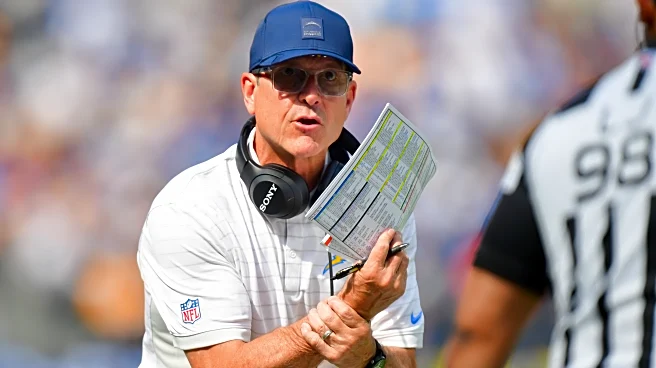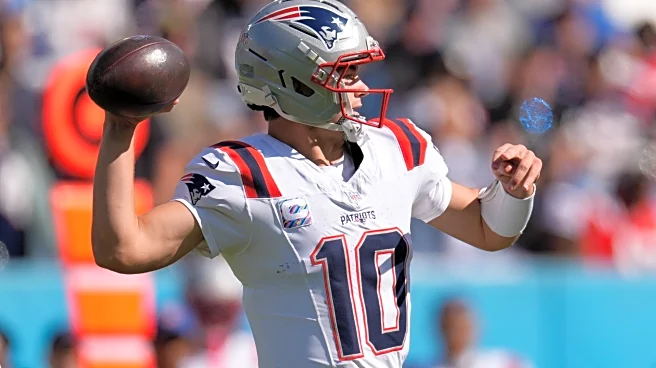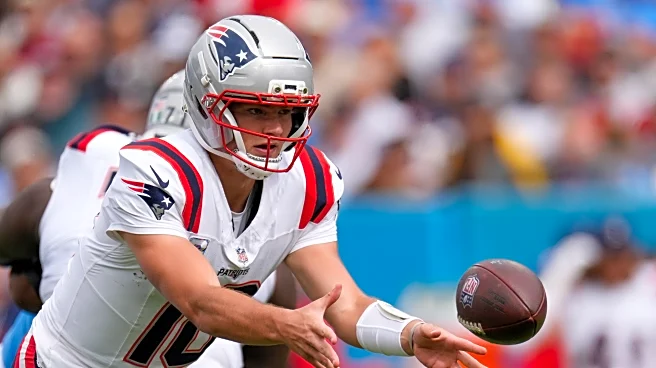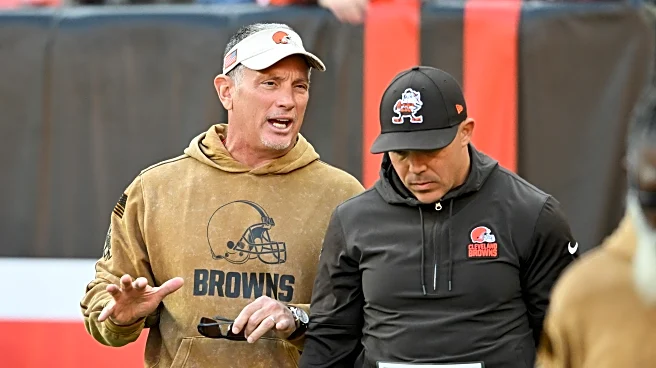What's Happening?
Fantasy football enthusiasts are gearing up for Week 8, with managers evaluating potential sleepers and duds. Jaxson Dart of the New York Giants is highlighted as a sleeper quarterback, potentially benefiting from Philadelphia's defensive strategies.
Conversely, Drake Maye of New England faces a challenging matchup against Cleveland's top-ranked defense. Running back Cam Skattebo of the Giants is expected to excel in the passing game, while Quinshon Judkins of Cleveland may struggle against New England's strong run defense. Wide receiver Jaylin Noel of Houston is poised for increased production due to injuries in the Texans' lineup.
Why It's Important?
Fantasy football decisions can significantly impact league standings and individual matchups. Identifying sleepers can provide managers with an edge, while avoiding duds can prevent costly mistakes. The analysis of player matchups against specific defenses is crucial for optimizing team performance. Managers must stay informed about player injuries and team dynamics to make strategic decisions. The insights provided can help managers navigate the unpredictable nature of fantasy football and maintain competitive advantage.
What's Next?
As Week 8 unfolds, managers will closely monitor player performances and adjust their strategies accordingly. Injuries and team changes may necessitate lineup adjustments and waiver wire acquisitions. The analysis of sleepers and duds will continue to be a valuable resource for managers seeking to maximize their team's potential. The ongoing evaluation of player matchups and team strategies will be essential for success in the fantasy football season.
Beyond the Headlines
Fantasy football reflects broader trends in the NFL, including team strategies and player development. The analysis of sleepers and duds offers insights into how teams are adapting to opponents and leveraging their strengths. The dynamics of fantasy football also highlight the importance of data analysis and strategic planning in sports management. As the season progresses, managers must remain adaptable and responsive to changes in player performance and team dynamics.


